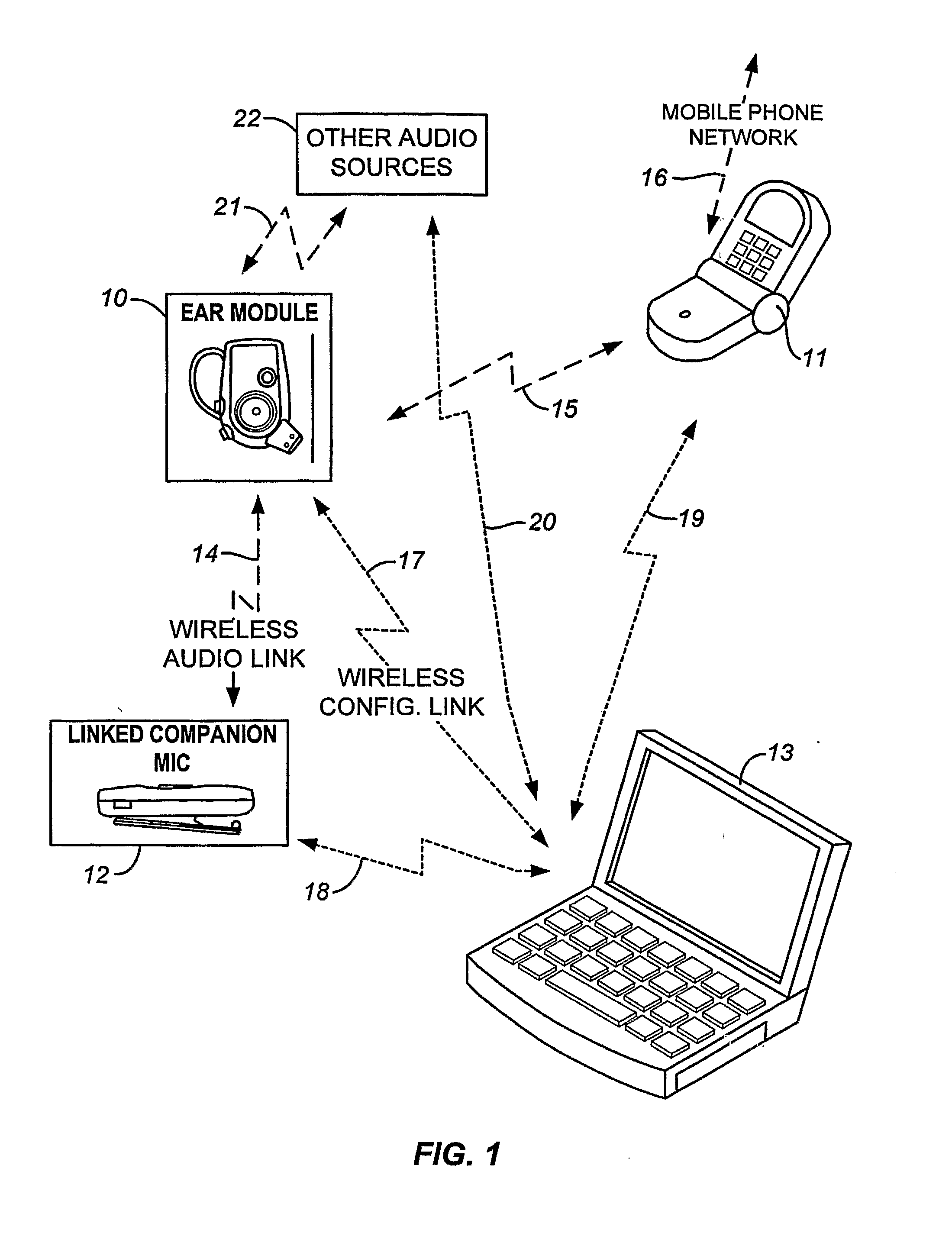Personal Sound System Including Multi-Mode Ear Level Module with Priority Logic
a technology of ear level modules and sound systems, applied in the field of personalized sound systems, can solve the problems of ineffective simple channel provision between hearing aids and variant audio sources, and achieve the effect of secure ear modules in the ear comfortably and easily
- Summary
- Abstract
- Description
- Claims
- Application Information
AI Technical Summary
Benefits of technology
Problems solved by technology
Method used
Image
Examples
Embodiment Construction
[0053] A detailed description of embodiments of the present invention is provided with reference to the FIGS. 1-36.
[0054]FIG. 1 illustrates a wireless network which extends the capabilities of an ear module 10 (See FIG. 2A-2B), adapted to be worn at ear level, and operating in multiple modes. The ear module 10 preferably includes a hearing aid mode having hearing aid functionality. The network facilitates techniques for providing personalized sound from a plurality of audio sources such as mobile phones 11, other audio sources 22 such as televisions and radios, and with a linked companion microphone 12 (See FIG. 3A-3B). In addition, wireless network provides communication channels for configuring the ear module 10 and other audio sources (“companion modules”) in the network using a configuration host 13, which comprises a program executed on a computer that includes an interface to the wireless network. In one embodiment described herein, the wireless audio links 14, 15, 21 between...
PUM
 Login to View More
Login to View More Abstract
Description
Claims
Application Information
 Login to View More
Login to View More - R&D
- Intellectual Property
- Life Sciences
- Materials
- Tech Scout
- Unparalleled Data Quality
- Higher Quality Content
- 60% Fewer Hallucinations
Browse by: Latest US Patents, China's latest patents, Technical Efficacy Thesaurus, Application Domain, Technology Topic, Popular Technical Reports.
© 2025 PatSnap. All rights reserved.Legal|Privacy policy|Modern Slavery Act Transparency Statement|Sitemap|About US| Contact US: help@patsnap.com



